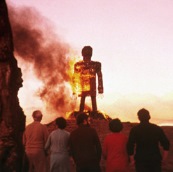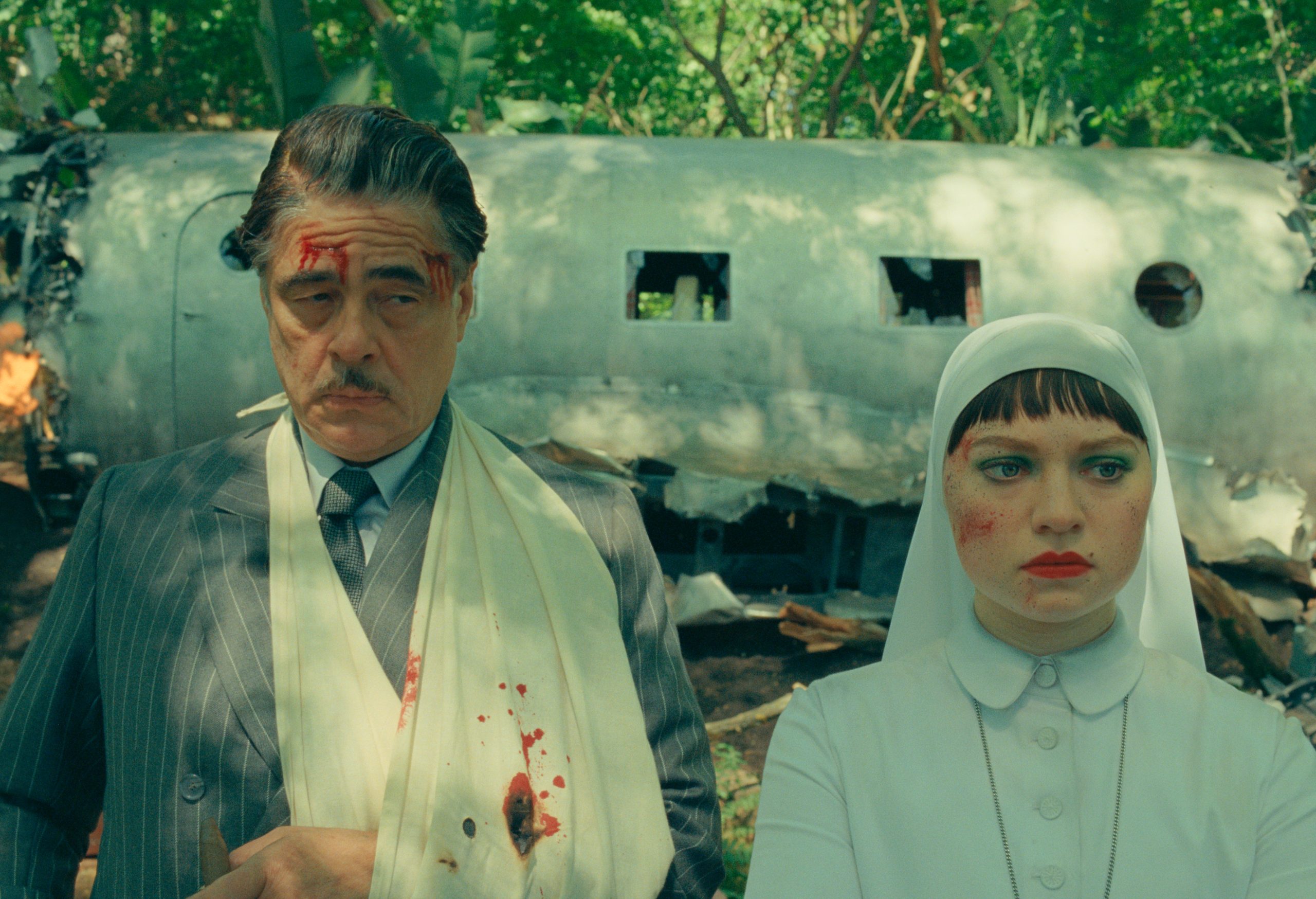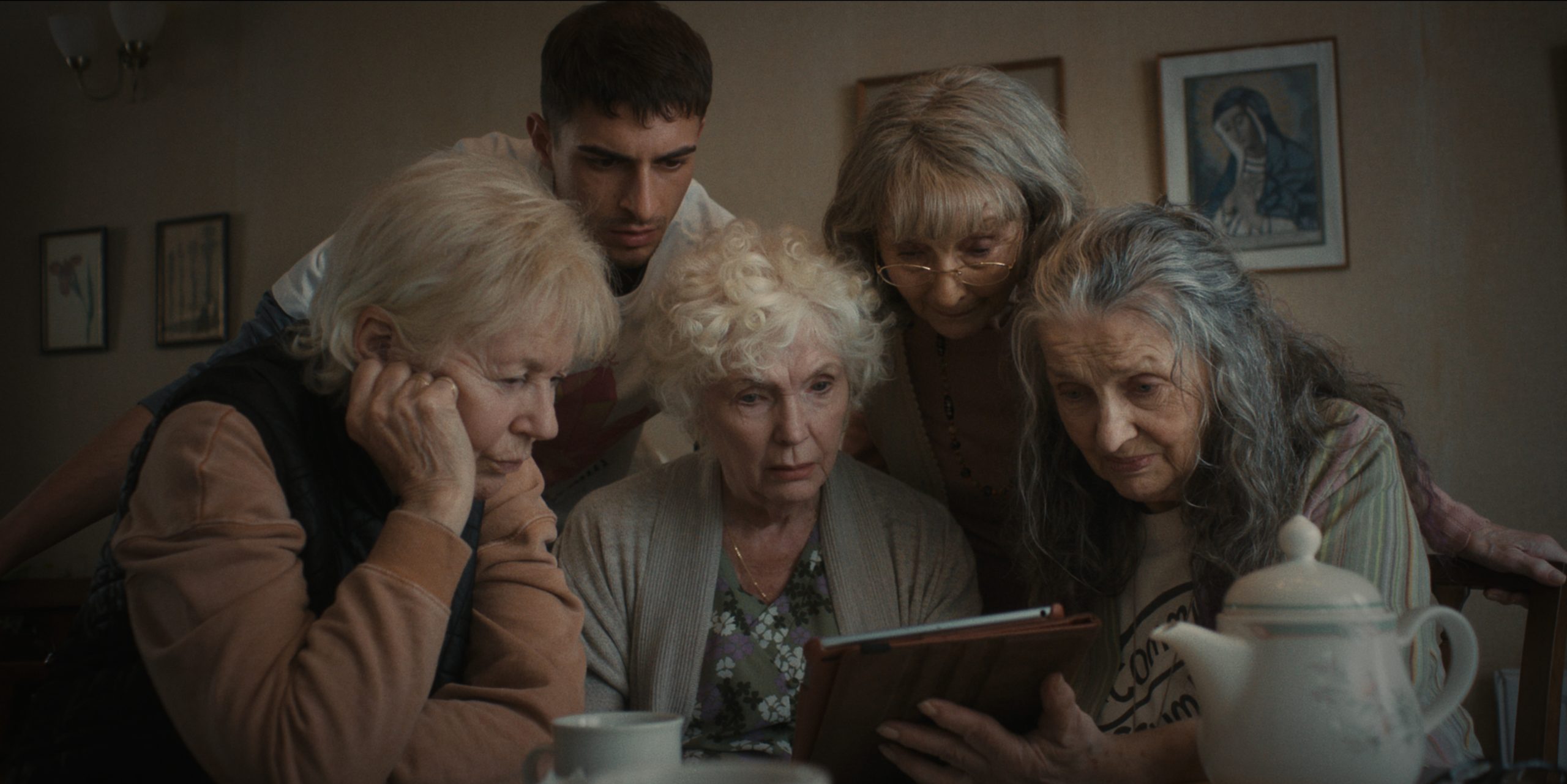
BLOG: Fields in England – A Folk Horror article by Kim Newman
Novelist and critic Kim Newman will be attending the opening day of Haunted Landscapes – A Season of Folk Horror at the IFI (16th-30th July) to introduce Witchfinder General, The Wicker Man, Quartermass and the Pit. The following article by Newman on English Folk Horror originally appeared in Sight & Sound magazine.
Fields in England
The title of the art-horror hybrid, A Field in England, directed by Ben Wheatley and written by Amy Jump, is at once specific and vague – just like its setting, a very physical stretch of English countryside in the year 1648 which is also somehow removed from the clamour of the raging Civil War, ringed by smoke and permeated by magic. So few British films beyond a clutch of history texts (Cromwell, 1970, To Kill a King, 2003) are set in this fascinating period – certainly, the number is minuscule when compared with the wealth of Hollywood cinema obsessed with the American Civil War – that each seems to have a close relationship with all of the others. A Field in England evokes both the historical grand guignol of Michael Reeves’ Matthew Hopkins – Witchfinder General (1968) and the hyper-real black and white earthiness of Kevin Brownlow’s Winstanley (1976), and its characters – not identified as fighting for the parliament or the King, and more concerned with their own survival and ambitions – are mostly victims of history like the folk in John Gilling’s Hammer historical swashbuckler The Scarlet Blade (1964).

The Wicker Man
Landscape is crucial to American genres like the Western and the road movie, and even informs fantastical forms like science fiction – the deserts in Jack Arnold’s 1950s films, It Came From Outer Space (1953) and Tarantula (1955) – and horror, from the haunted New England of Let’s Scare Jessica to Death (1971) to the winding Colorado approach roads to the Overlook Hotel in The Shining (1980). But English landscape is too often taken for granted. Our science fiction films prefer to spend time down the stage-set pub or in anonymous research establishments while our horrors are often indoors, on period sets, and concerned with fractured families rather than forces of nature. The most familiar woodland in British horror is Black Park, near Windsor – whose tall, straight trees Hammer passed off as their imaginary version of Transylvania, though they also serve as an English backdrop in The Scarlet Blade. This tame, accessible location looks nothing like the real Carpathians, but also doesn’t resemble Cornwall, which it is supposed to play in Gilling’s The Reptile (1966) and Plague of the Zombies (1966).

Witchfinder General
Before Witchfinder General, only odd, unloved, independent British horror films ventured much beyond the home counties. The Cornish coast does feature in Doctor Blood’s Coffin (1961), shot by a young Nicolas Roeg, and the ridiculous The Vulture (1967), and bloody doings in the West Country would continue in Crucible of Terror (1971) – one of the few British horror films to poke about on beaches the way Roger Corman or Jean Rollin do – and the mummerset-inflected Disciple of Darkness (1972). Comparatively few Hammer Films stress Englishness in their settings, and the outstanding examples tend to be by non-British directors: American exile Joseph Losey makes startling use of Weymouth and nearby cliffs in The Damned (1963) while Canadian Silvio Narizzano plays up the stagnant ponds and thick woods around the mad diva’s prison-like home in the authentically gothic Fanatic (1965). When Corman brought his previously studiobound Edgar Allan Poe series from California to Britain, he finally stepped off baroque sets for Tomb of Ligeia (1964), which puts Vincent Price in the middle of an authentically ruined Norfolk abbey and (like Plague of the Zombies, Man at the Top, The Ruling Class and The Final Conflict) finds horror in the well-dressed brutality and regimented class distinction of fox-hunting.
Victorian London, or an imaginary section of it composed of scraps of Dickens and Doyle and Stoker and Stevenson and Madame Tussaud’s Jack the Ripper in thick fog, holds a key position in our horror culture. Of cour classic horror texts, only The Hound of the Baskervilles takes the train West and finds an equally rich and strange Dartmoor, with sucking mires and howling legends and paleolithic remains. Often, when it comes to locating magical, savage pockets of rural lore, British cinema overlooks England entirely, and imagines Scots islands – from Powell and Pressburger’s “I Know Where I’m Going” (1945) to Robin Hardy’s The Wicker Man (1973) – or Irish backwaters, as in Hammer’s Wake Wood (2011). When in development as a Hollywood production, Robert Holdstock’s novel Mythago Wood, one of the great evocations of the magical English countryside, was reset in Scotland because the studios couldn’t imagine space for such infinities as Holdstock’s Ryhope – no matter that Powell and Pressburger shot a great deal of A Canterbury Tale (1945), one of the great film evocations of the magical English countryside, on the Holdstock farm in Kent, owned by another branch of the novelist’s family. Similarly, Clive Barker’s monster novella ‘Rawhead Rex’, set in a small English village, was shifted to Ireland for budget reasons in George Pavlou’s 1986 film – no matter that its monster’s Latin name came from the Roman occupation which didn’t happen in Ireland.
Reeves shot Witchfinder General in Suffolk and Norfolk not to bring horror out to the country but because he wanted to make a kind of British Western in horror film disguise – his film’s plot is basically a Budd Boetticher-Randolph Scott revenge/chase drama, haring across green fields rather than arid badlands. But the American West’s scenery complements the harshness of the Western, whereas the English countryside counterpoints the horrors – with black-clad figures on horseback, splashes of blood on greenery and authentic recreations of witch-torture on the precise sites where the historical events took place. The short-lived Reeves’ smart, nasty little film was not much noticed on its release, but has – like The Wicker Man – ascended to a pantheon over the years. Far more ‘important’ at the time, but less liked these days, John Schlesinger’s expensive, romantic adaptation of Thomas Hardy’s Far From the Madding Crowd (1967), shot again by Roeg, is one of the cinema’s periodic attempts to realise Hardy’s only-just-imaginary county of Wessex, which lies like tracing paper over the real map of the West Country. Roman Polanski filmed Tess (1979) in Brittany to try to get a sense of this corner of England, perhaps for legal reasons as much as artistic. In Cul-de-Sac (1966), made for the producers of Witchfinder General with Reeves’ preferred leading man Donald Pleasence, he uses Lindisfarne, in Northumberland, so distinctively that Holy Island has been unofficially off-limits as a location ever since.

A Field in England
The subject of A Field in England is magic, melding cloak-swishing alchemy with mushroom-based psychedelia. Three soldiers (Richard Glover, Peter Ferdinando, Ryan Pope) and a scholar (Reece Shearsmith) find themselves in the field, and are compelled to haul on a rope to drag in an Irish outsider, the treasure-seeking magician O’Neil (Michael Smiley). The field is at once small and infinite, with few landmarks, but the scholar is used as a hunting dog to pinpoint the location where the treasure is to be dug up. In one of the few British films explicitly influenced by Reeves, Piers Haggard’s The Blood on Satan’s Claw (1971) – which Shearsmith did a commentary track on with his fellows in the League of Gentlemen troupe – a 17th Century farmer comes across a demonic skull while ploughing his field. Evil infects his whole community until a witchfinding judge (played by Patrick Wymark, Cromwell in Witchfinder General) arrives to apply extreme measures to end the malign influence. A Field in England sometimes seems like Haggard’s film put through a blender and transformed into a rustic, English take on the earthy symbolic dramas Ingmar Bergman made on his rocky Swedish islands. There are a few precedents for such hybrids in British cinema, like Chris Newby’s mediaeval monochrome fable Anchoress (1993), but it isn’t a familiar mode.

Blood on Satan’s Claw
Wheatley’s previous films also get out into the English countryside, but for contrast with town settings, exporting their evils from Brighton, suburbia or Birmingham, and touch on the horrors of suburbia and holiday encampments first. In Down Terrace (2009), the claustrophobia of a plot set almost entirely in a crowded family home in Brighton is barely relieved by trips out onto the South Downs to get rid of bodies. In Kill List (2011), suburban hit-men (notionally from London, though Film Yorkshire funding means the anonymous estate is even more anonymously located) carry out bloody atrocities in small-town garages and motels before being run to ground on a vast country estate. In Sightseers (2012), a caravanning trip for a perfectly-matched couple of rage-driven holidaymakers becomes a killing spree where holiday sights – like Creach Tram Museum – are marked by murders of variously obnoxious or innocent types who cross their path. A Field in England looks different, even if recurrent player Michael Smiley (who is even in Wheatley’s POV vampire episode of The ABCs of Death, 2012) is still around: the cinematography is starkly black and white, the language is fruitily in period, and the plot is even more oblique – to the extent that much of it is deliberately difficult to fathom, as if the field were a tesseract away from genre and narrative as well as from history and geography. In this, the film approaches a type of British 1970s television horror, practiced by Nigel Kneale (The Stone Tape, Quatermass, Against the Crowd ‘Murrain’, Beasts ‘Baby’), Alan Garner (The Owl Service, Play for Today ‘Red Shift’, Spooky ‘The Keeper’) and others (Children of the Stones, The Mind Beyond ‘Stones’, Dead of Night ‘The Exorcism’, Play for Today ‘Robin Redbreast’, A Ghost Story for Christmas ‘Stigmata’), in which standing stones are locuses for hard-to-fathom sacrifices and miracles, and deep history is constantly on the point of breaking through the surface, often with gruesome, physical consequences.
Wheatley isn’t unique among the current generation of British horror filmmakers to get out of the city. In both Eden Lake (2009) and The Woman in Black (2012), very different types of horror, James Watkins has townies terrorised in stretches of the countryside: Eden Lake even uses (and transforms) Hammer’s Black Park as a haunt of feral estate kids, while The Woman in Black, made for Hammer, follows Susan Hill’s M.R.James-influenced novel by haunting marsh roads (an Essex location). Also finding horror in odd corners are Johannes Roberts’ demon-haunted Forest of the Damned (2005), the living copse horror Dead Wood (2007), Tom Shankland’s Christmas-set The Children (2008), Paul Andrew Williams’s farm mutant picture The Cottage (2008), the witch movie The Scar Crow (2009) and the vampire movie Blood & Roses (2009), the village-set gore comedies Hot Fuzz (2007), Doghouse (2009) and Lesbian Vampire Killers (2009), Susan Jacobson’s stalker/suspense picture The Holding (2011), the weekend break slasher films Gnaw (2008) and Don’t Let Him In (2012), the ‘found footage’ horrors A Night in the Woods (2011) and The Hollow (2012), gore comedies like Small Town Folk (2007) and Alex Chandon’s Two Thousand Maniacs!-in-Yorkshire knockabout Inbred (2011), Leigh Dovey’s cyclical The Fallow Field (2012) and the interestingly-paired Northern-set zombie projects Harold’s Going Stiff (2012) and In the Flesh (2013).
It may be that changes in the industry mean that the current crop of British horrors are shut out of even the small studios where Hammer or Amicus made the bulk of their films from the 1950s to the ‘70s. One thing shared by Doctor Blood’s Coffin, Cul-de-Sac and Disciple of Darkness is that they were all made outside the cosy enclaves of Bray or Shepperton and had to go out on location for budget reasons. As with the contemporary chroniclers of British horror, some just prayed it wouldn’t rain and hoped to make it to the end of the shoot with enough footage to cut together whileothers were inspired to address the magical, primal aspects of our blood-soaked,history-and-legend-imbued landscape.
IFI CINEMAS TODAY
The IFI is supported
by The Arts Council
News
 MAY 2025 AT THE IFI
MAY 2025 AT THE IFI
25 April 2025 RIP MARTHA O’NEILL
RIP MARTHA O’NEILL
23 April 2025 IBERSCREEN COMPETITION
IBERSCREEN COMPETITION
16 April 2025 APRIL 2025 AT THE IFI
APRIL 2025 AT THE IFI
28 March 2025